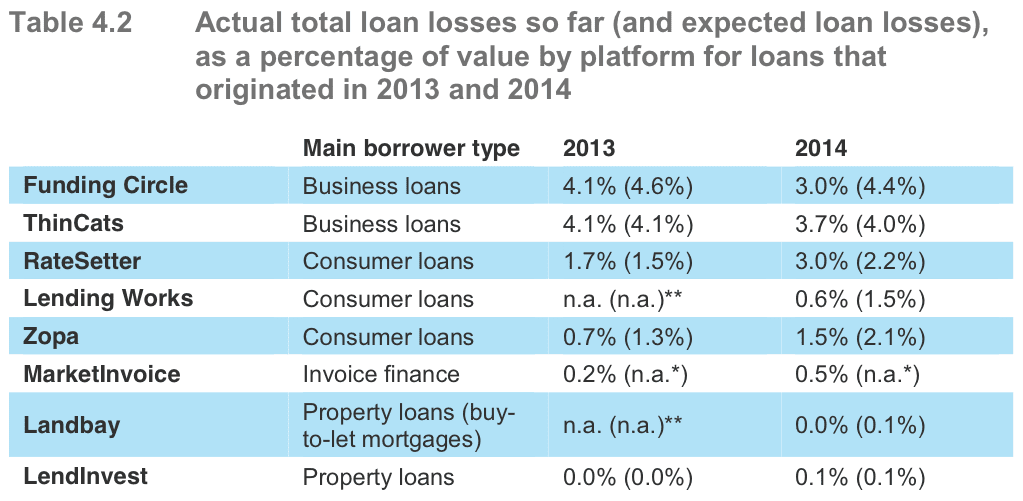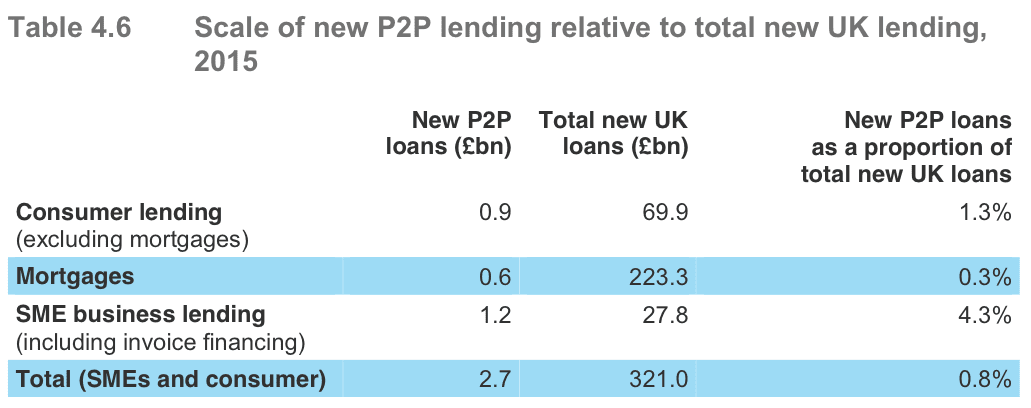
A groundbreaking new report is being released today at LendIt Europe 2016 in London. Titled “The economics of peer-to-peer lending”, the report was commissioned by the UK Peer-to-Peer Finance Association (P2PFA) and produced by Oxera. The 74-page report presents findings of an economic assessment focusing on the benefits and impact of the p2p lending industry.
With the FCA conducting their review of the P2P lending industry this report is clearly aimed at informing public policy. But rather than be a self-congratulatory piece with little substance it is a thorough analysis of the sector in the UK and contains information never before made public. The information presented includes data from the eight members of the P2PFA: Funding Circle, ThinCats, RateSetter, Lending Works, Zopa, MarketInvoice, LandBay and LendInvest.
Topics discussed in the report are:
- Overview of how P2P lending works, explaining fundamental economics and potential misconceptions.
- Benefits of P2P lending to both borrowers and investors.
- How P2P platforms manage risk including credit risk, liquidity and platform risk.
- Investor understanding in P2P lending.
- Factors to consider during the regulatory review of the industry.
Christine Farnish, Chair of P2PFA is very pleased with the outcome of this report. Here is what she had to say:
This is a ground breaking piece of work for the p2p lending sector. Oxera’s analysis is evidence based and objective. They look specifically at the risks involved in p2p lending and how they are managed. Oxera’s conclusions are that mainstream platforms operate robust and resilient business models and offer investors and borrowers a good deal. The report should be of significant value to policy makers and regulators as the market develops further.
I read this report on the way over to London for LendIt Europe and I have to say I came away impressed. It goes into great detail about the different offerings from the major UK platforms dividing them into consumer, SME and property lending. Their data on interest rates, defaults and net returns are compared with traditional lenders and asset managers and the results are quite favorable for the most part.
There is an entire section on possible outcomes in a recession. There is a deep dive on Funding Circle’s data as they look at the results of their stress test. Zopa, the only P2P lender who has data from the last recession, shares their actual performance in the 2008-09 time period.
My favorite table in the report (reproduced below) shows every platform and the difference between their projected loss and their actual loss for 2013 and 2014. Most platforms are beating their projected losses handily, a great sign that their underwriting is solid.
Another fascinating table is the one that compares the total size of the P2P lending market to the total size of the overall lending market. It shows that P2P lending is responsible for 0.8% of overall lending in the UK.
This is the most comprehensive study on peer to peer lending focused on the UK market. Newcomers and seasoned industry professionals will both find value in the content of the report. You can download the full report here: The economics of peer-to-peer lending.




